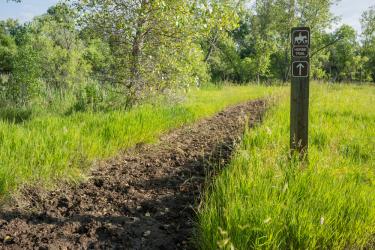What Activities Should Be Guided by BMPs?
Best Management Practices (BMPs) should be integrated in your forest plan and used as guidance for intensive management actions like timber harvesting and road building. Inclusion of Best Management Practices in your management plan can be as detailed as you like, from a periodic mention to an integrated BMP strategy. Some elements that may be useful in your management plan are:
- A map of your woodland that shows areas of special concern for water quality protection.
- A list of sites where BMPs are warranted and a detailed list of BMPs for each site.
- A list of cost-share programs that can help you finance the work.
- A list of technical resources for help with water protection.
- An outline of the required permits you will need when performing management activities that may impact water.
It can be very helpful to begin with a map that helps you visualize water on your woodland, and on which you can highlight priority areas for water protection and restoration–like lakes, streams, wetlands and their buffer zones. Your management plan can be a useful tool for defining and cataloging strategies for water quality protection during woodland management activities. This will help you better plan long range management of your forest, for everything from timber harvesting to creating a system of roads and trails, to restoring watershed integrity that has been disturbed in the past.
Once you have mapped out a broad strategy for your land, you will need to pay special attention to certain issues and activities that are important to water quality and flow on your land:
How can I get more tips?
It’s simple! Enter your email below.

